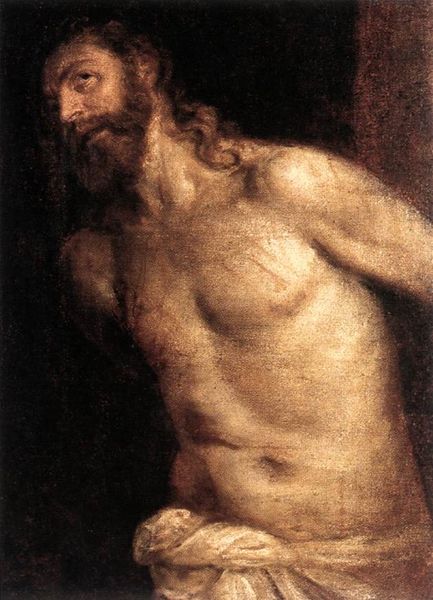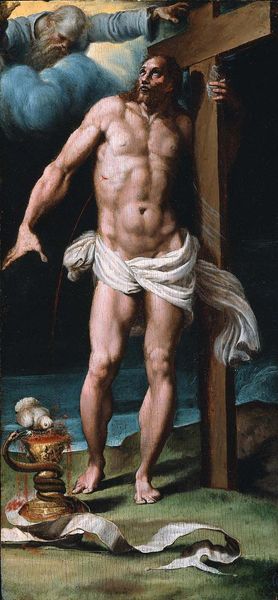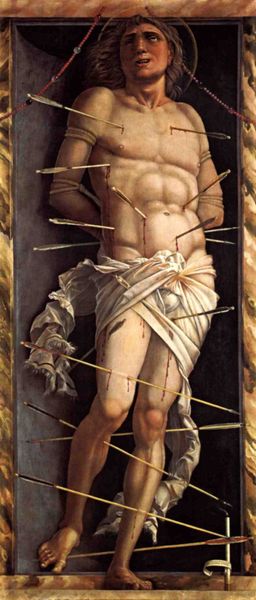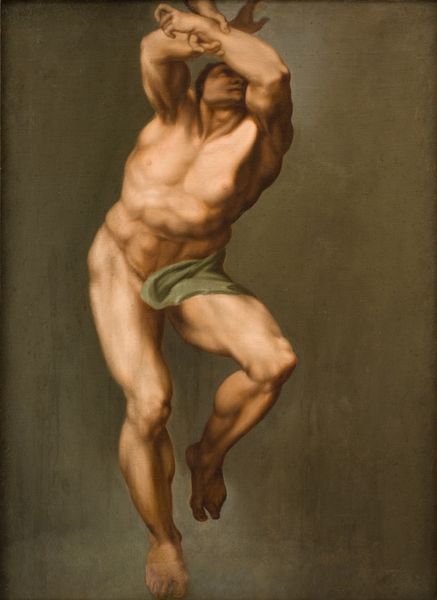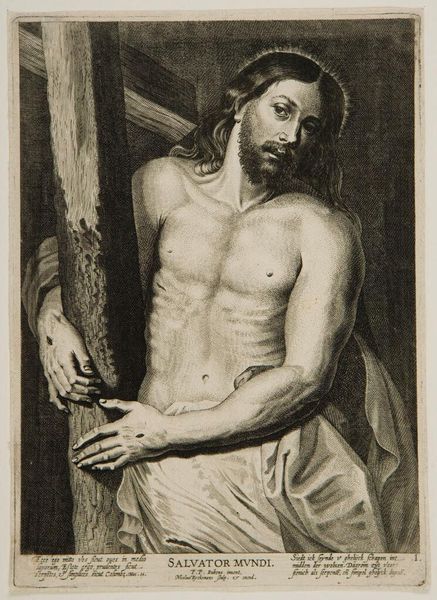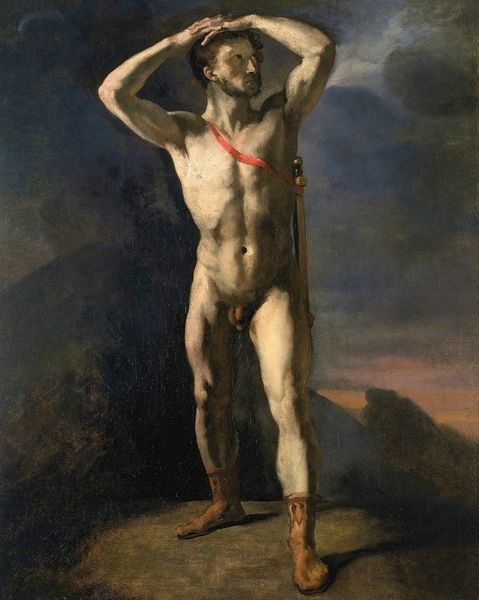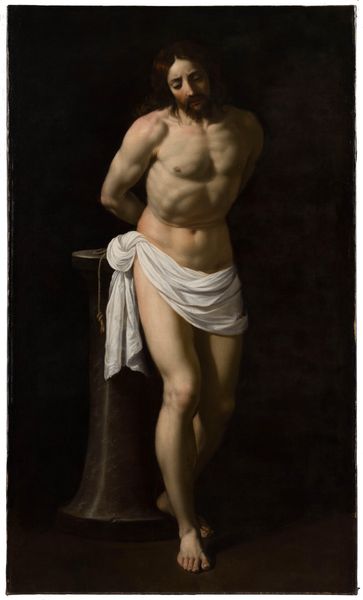
painting, oil-paint
#
portrait
#
allegory
#
painting
#
oil-paint
#
mannerism
#
mythology
#
history-painting
#
italian-renaissance
#
nude
Copyright: Public Domain: Artvee
Agnolo Bronzino painted this arresting image of Andrea Doria as Neptune, likely in the mid-16th century, using oil on panel. Doria, the celebrated admiral, is depicted with the symbols of Neptune: the trident, the flowing beard, and the partial nudity, all alluding to dominion over the sea. The trident, the most potent symbol here, stretches back into antiquity. It appears in ancient Greek and Roman art as the weapon of Poseidon or Neptune. In Bronzino’s time, these classical motifs were resurrected as emblems of power. Consider the recurrence of the trident, from ancient pottery to Renaissance paintings, each time the symbol is re-invested with meaning, adapting to new cultural landscapes. The trident symbolizes power but also reflects the subconscious human need to control the natural world. The portrayal of Doria as Neptune taps into a deep well of cultural memory, engaging viewers on both a conscious and subconscious level. We see how classical symbols are not static but cyclical, continually resurfacing and evolving across history, reflecting society’s changing values.
Comments
No comments
Be the first to comment and join the conversation on the ultimate creative platform.



